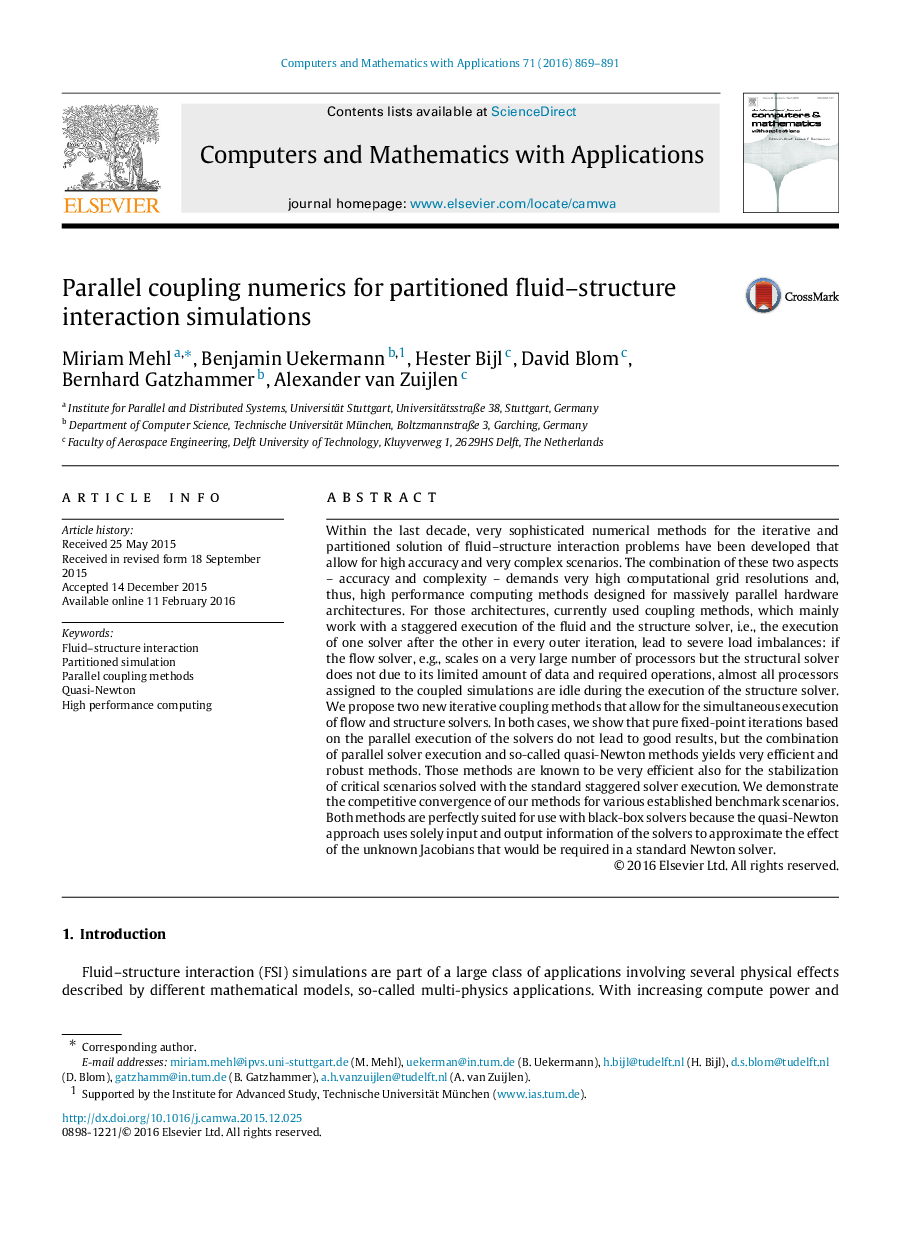| کد مقاله | کد نشریه | سال انتشار | مقاله انگلیسی | نسخه تمام متن |
|---|---|---|---|---|
| 470804 | 698565 | 2016 | 23 صفحه PDF | دانلود رایگان |
Within the last decade, very sophisticated numerical methods for the iterative and partitioned solution of fluid–structure interaction problems have been developed that allow for high accuracy and very complex scenarios. The combination of these two aspects–accuracy and complexity–demands very high computational grid resolutions and, thus, high performance computing methods designed for massively parallel hardware architectures. For those architectures, currently used coupling methods, which mainly work with a staggered execution of the fluid and the structure solver, i.e., the execution of one solver after the other in every outer iteration, lead to severe load imbalances: if the flow solver, e.g., scales on a very large number of processors but the structural solver does not due to its limited amount of data and required operations, almost all processors assigned to the coupled simulations are idle during the execution of the structure solver. We propose two new iterative coupling methods that allow for the simultaneous execution of flow and structure solvers. In both cases, we show that pure fixed-point iterations based on the parallel execution of the solvers do not lead to good results, but the combination of parallel solver execution and so-called quasi-Newton methods yields very efficient and robust methods. Those methods are known to be very efficient also for the stabilization of critical scenarios solved with the standard staggered solver execution. We demonstrate the competitive convergence of our methods for various established benchmark scenarios. Both methods are perfectly suited for use with black-box solvers because the quasi-Newton approach uses solely input and output information of the solvers to approximate the effect of the unknown Jacobians that would be required in a standard Newton solver.
Journal: Computers & Mathematics with Applications - Volume 71, Issue 4, February 2016, Pages 869–891
